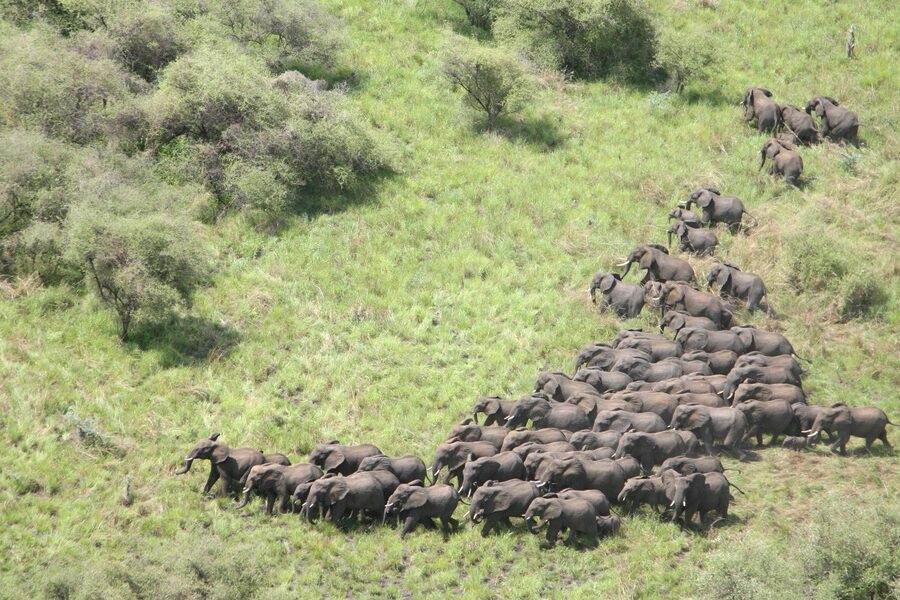Lebanon’s short coastline sits at an ecological crossroads of the eastern Mediterranean, where coastal shelves, rocky reefs and deeper offshore waters support a mix of native, migratory and introduced species. Local fisheries, recreational divers and coastal scientists all rely on clear species records to understand what lives in those habitats and where to find it.
There are 48 Fish of Lebanon, ranging from Atlantic bluefin tuna to Yellowmouth barracuda. For each species, you’ll find below the Scientific name, Habitat & location (depth m), and Status (IUCN/commercial/invasive) arranged in columns for quick reference, so you can scan ranges, conservation listings and commercial importance — you’ll find below.
How threatened are Lebanon’s coastal fish species?
Threat levels vary: many Mediterranean species are listed as Least Concern, but commercially targeted animals like the Atlantic bluefin tuna face heavy fishing pressure and some species are impacted by habitat degradation or invasive competitors. Check the Status column for IUCN tags and commercial or invasive notes to see which species need priority attention locally.
How should I use the depth and status columns when planning a dive or a survey?
Use the Habitat & location (depth m) column to match sites to your dive or survey capabilities, and consult the Status column to avoid targeting vulnerable or protected species; when in doubt, follow local regulations and seasonal restrictions to minimize impact.
Fish of Lebanon
| Common name | Scientific name | Habitat & location (depth m) | Status (IUCN/commercial/invasive) |
|---|---|---|---|
| Goldblotch grouper | Epinephelus costae | Marine; rocky & sandy bottoms along the Lebanese coast; 10-200 | IUCN: LC; Highly commercial; Native |
| Dusky grouper | Epinephelus marginatus | Marine; rocky reefs and caves along the coast; 8-300 | IUCN: VU; Highly commercial; Native |
| Mottled grouper | Mycteroperca rubra | Marine; rocky and sandy bottoms; 15-200 | IUCN: VU; Commercial; Native |
| Painted comber | Serranus scriba | Marine; rocky reefs and seagrass beds along the coast; 0-150 | IUCN: LC; Minor commercial; Native |
| European sea bass | Dicentrarchus labrax | Marine & brackish; coastal waters, estuaries, river mouths; 0-100 | IUCN: LC; Highly commercial; Native |
| White seabream | Diplodus sargus | Marine; rocky shores and surf zones along the coast; 0-50 | IUCN: LC; Highly commercial; Native |
| Common pandora | Pagellus erythrinus | Marine; various bottoms (sand, mud, rock) along the coast; 15-200 | IUCN: LC; Highly commercial; Native |
| Gilt-head seabream | Sparus aurata | Marine & brackish; coastal waters and lagoons; 1-150 | IUCN: LC; Highly commercial; Native |
| Bogue | Boops boops | Marine; pelagic and demersal over various bottoms; 0-350 | IUCN: LC; Commercial; Native |
| Damselfish | Chromis chromis | Marine; rocky reefs and near underwater cliffs; 2-40 | IUCN: LC; Non-commercial; Native |
| Ornate wrasse | Thalassoma pavo | Marine; shallow rocky reefs and seagrass beds; 1-50 | IUCN: LC; Aquarium trade; Native |
| Mediterranean rainbow wrasse | Coris julis | Marine; rocky reefs and seagrass meadows; 0-120 | IUCN: LC; Non-commercial; Native |
| Striped red mullet | Mullus surmuletus | Marine; sandy, gravel, and rocky bottoms; 5-400 | IUCN: LC; Highly commercial; Native |
| Red mullet | Mullus barbatus | Marine; sandy and muddy bottoms on the continental shelf; 10-500 | IUCN: LC; Highly commercial; Native |
| Red Sea goatfish | Parupeneus forsskali | Marine; sandy and muddy bottoms along the coast; 1-45 | IUCN: LC; Commercial; Invasive (Lessepsian) |
| Goldband goatfish | Upeneus moluccensis | Marine; sandy and muddy bottoms; 10-120 | IUCN: LC; Commercial; Invasive (Lessepsian) |
| Common lionfish | Pterois miles | Marine; rocky reefs, wrecks, and hard bottoms; 1-100 | IUCN: LC; Minor commercial; Invasive (Lessepsian) |
| Red scorpionfish | Scorpaena scrofa | Marine; rocky and sandy bottoms; 20-500 | IUCN: LC; Commercial; Native |
| Dusky spinefoot | Siganus luridus | Marine; rocky reefs and seagrass beds along the coast; 2-25 | IUCN: LC; Commercial; Invasive (Lessepsian) |
| Marbled spinefoot | Siganus rivulatus | Marine; shallow coastal waters, seagrass, sandy bottoms; 0-30 | IUCN: LC; Commercial; Invasive (Lessepsian) |
| Yellowmouth barracuda | Sphyraena viridensis | Marine; pelagic in coastal waters, often near reefs; 5-100 | IUCN: LC; Commercial; Native |
| Silver-cheeked toadfish | Lagocephalus sceleratus | Marine; sandy and muddy bottoms, coastal waters; 10-100 | IUCN: LC; Highly toxic; Invasive (Lessepsian) |
| Bluespotted cornetfish | Fistularia commersonii | Marine; seagrass beds and sandy areas near reefs; 1-130 | IUCN: LC; Minor commercial; Invasive (Lessepsian) |
| Brushtooth lizardfish | Saurida undosquamis | Marine; sandy and muddy bottoms; 1-100 | IUCN: LC; Commercial; Invasive (Lessepsian) |
| Randall’s threadfin bream | Nemipterus randalli | Marine; sandy and muddy bottoms; 20-400 | IUCN: LC; Commercial; Invasive (Lessepsian) |
| Reticulated filefish | Stephanolepis diaspros | Marine; seagrass beds and areas with algae cover; 0-50 | IUCN: LC; Non-commercial; Invasive (Lessepsian) |
| European pilchard | Sardina pilchardus | Marine; pelagic, coastal and offshore; 10-100 | IUCN: LC; Highly commercial; Native |
| European anchovy | Engraulis encrasicolus | Marine; pelagic, forming large schools in coastal waters; 0-400 | IUCN: LC; Highly commercial; Native |
| Atlantic bluefin tuna | Thunnus thynnus | Marine; pelagic, highly migratory, open ocean; 0-1,000 | IUCN: LC; Highly commercial; Native |
| Common dolphinfish | Coryphaena hippurus | Marine; pelagic, open ocean, often near floating objects; 0-85 | IUCN: LC; Commercial; Native |
| Bluefish | Pomatomus saltatrix | Marine; pelagic, coastal waters and surf zones; 0-200 | IUCN: VU; Commercial; Native |
| Mediterranean horse mackerel | Trachurus mediterraneus | Marine; pelagic and semi-pelagic over the continental shelf; 0-500 | IUCN: LC; Highly commercial; Native |
| Garfish | Belone belone | Marine; pelagic, surface waters; 0-20 | IUCN: LC; Minor commercial; Native |
| John Dory | Zeus faber | Marine; demersal over sand and mud; 5-400 | IUCN: DD; Highly commercial; Native |
| European hake | Merluccius merluccius | Marine; deep water, sandy and muddy bottoms; 30-1,000 | IUCN: LC; Highly commercial; Native |
| Forkbeard | Phycis phycis | Marine; rocky bottoms and caves; 10-650 | IUCN: LC; Commercial; Native |
| Thinlip mullet | Liza ramada | Marine & brackish; coastal waters, estuaries, harbors; 0-10 | IUCN: LC; Commercial; Native |
| Sandbar shark | Carcharhinus plumbeus | Marine; coastal and offshore continental shelves; 0-280 | IUCN: EN; Protected; Native |
| Common stingray | Dasyatis pastinaca | Marine; sandy and muddy bottoms in coastal waters; 0-200 | IUCN: VU; Bycatch; Native |
| European eel | Anguilla anguilla | Freshwater & Marine; rivers, estuaries, coastal waters; 1-700 | IUCN: CR; Protected; Native |
| Orontes trout | Salmo larii | Freshwater; upper Orontes River basin; 0-3 | IUCN: CR; Non-commercial; Endemic |
| Orontes himri | Carasobarbus chantrei | Freshwater; Orontes River basin; 0-5 | IUCN: VU; Locally consumed; Native |
| Levantine scraper | Capoeta damascina | Freshwater; rivers and streams (e.g., Litani, Awali); 0-5 | IUCN: LC; Non-commercial; Native |
| Large-scaled pupfish | Aphanius mento | Freshwater; springs, coastal streams, and wetlands; 0-2 | IUCN: LC; Non-commercial; Native |
| Jordan stone loach | Garra ghorensis | Freshwater; rivers and streams with moderate current; 0-2 | IUCN: LC; Non-commercial; Native |
| Eastern mosquitofish | Gambusia holbrooki | Freshwater; slow-moving streams, ponds, wetlands; 0-2 | IUCN: LC; Non-commercial; Invasive |
| Common carp | Cyprinus carpio | Freshwater; lakes (e.g., Qaraoun), slow-moving rivers; 1-20 | IUCN: VU (wild); Non-commercial; Introduced |
| Rainbow trout | Oncorhynchus mykiss | Freshwater; cold, clear streams and fish farms; 1-5 | IUCN: LC; Commercial; Introduced |
Images and Descriptions

Goldblotch grouper
A large, sought-after predatory grouper reaching 140 cm. It is a prized catch for local fishermen, often found lurking near underwater caves and crevices while ambushing smaller fish. Its population is considered stable.
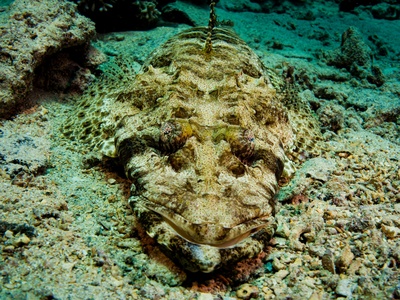
Dusky grouper
An iconic, large grouper known for its solitary behavior and territorial nature. It is a top predator on rocky reefs and highly valued in markets, but overfishing has made it vulnerable to extinction.

Mottled grouper
A sleek grouper recognized by its brownish-grey mottled pattern. It is an active predator of fish and squid. Like other large groupers in the region, its population is vulnerable due to heavy fishing pressure.

Painted comber
A small, beautifully patterned sea perch with vertical bars and a bright blue belly. It is very common in shallow coastal waters and is known for being simultaneously male and female (hermaphroditic).

European sea bass
A prized game and food fish with a sleek, silver body and a voracious appetite. It is highly adaptable, often found hunting in turbulent waters near river mouths, and is a staple in high-end seafood restaurants.
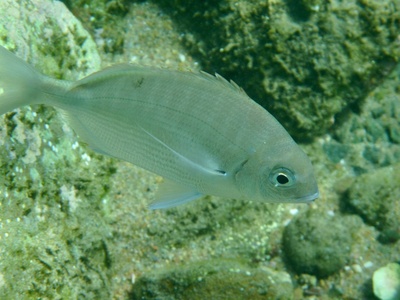
White seabream
A popular and common fish recognized by its silver body and a black spot on its tail base. It often feeds in energetic surf zones and is a favorite target for both commercial and recreational anglers in Lebanon.

Common pandora
A popular food fish with pinkish-silver skin and blue spots. It lives in schools and feeds on small invertebrates. It is commonly caught by trawlers and longliners and is a frequent sight in local fish markets.

Gilt-head seabream
A highly prized fish, easily identified by the golden band between its eyes. Known for its powerful jaws used to crush shells, it is both wild-caught and widely aquafarmed, making it one of Lebanon’s most important fish.

Bogue
A very common schooling fish with a streamlined body and exceptionally large eyes, which is the origin of its scientific name. It forms huge schools and is a key commercial species, often fried or grilled.
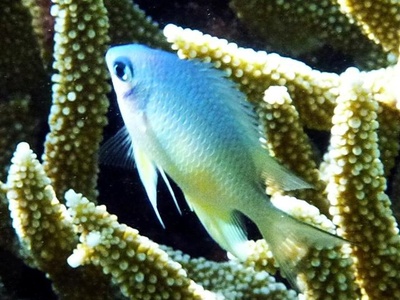
Damselfish
An extremely abundant small, dark fish that forms massive, shimmering schools above rocky reefs. As juveniles, they are a brilliant electric blue. They are a fundamental part of the Lebanese coastal ecosystem.
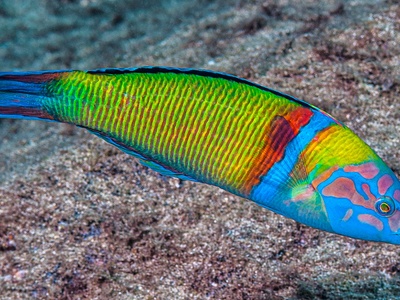
Ornate wrasse
One of the most colorful fish in Lebanon’s waters. Males are brilliantly colored with green, blue, and red patterns. They are very active during the day and are a common sight for snorkelers along the coast.
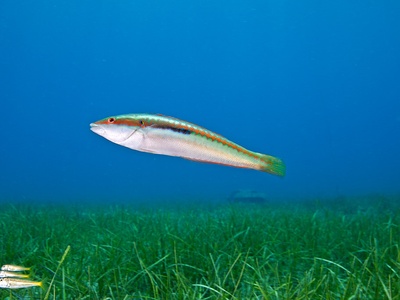
Mediterranean rainbow wrasse
A vibrant and common wrasse with a striking color difference between sexes. Males have a bright orange-and-blue pattern and a dark spot, while females are more subdued. They are active swimmers often seen flitting around reefs.

Striped red mullet
A native goatfish highly prized for its delicate flavor. It uses a pair of long barbels under its chin to probe the seabed for food. It is one of the most important commercial fish for local fisheries.

Red mullet
Similar to the striped red mullet, this species prefers softer, muddier bottoms. It is a staple of the Lebanese seafood market and a key target for bottom trawlers. Its flesh is considered a delicacy.
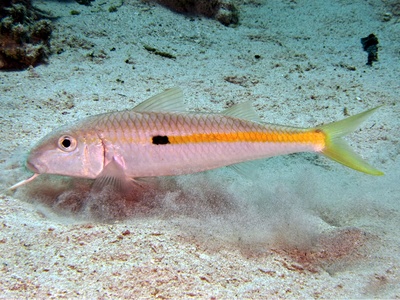
Red Sea goatfish
A highly successful Red Sea invader, now more common than native mullets. It’s recognized by the prominent black stripe along its body. It has become an important commercial catch, altering local fisheries.
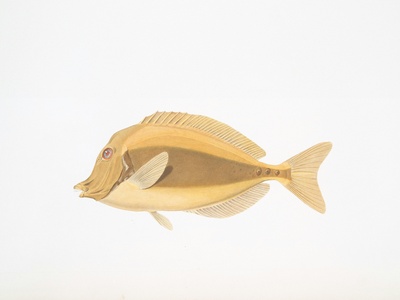
Goldband goatfish
Another invasive goatfish from the Red Sea, distinguished by the bright yellow stripes on its body and tail. It forms large schools over soft bottoms and is now a significant part of the commercial trawl catch.
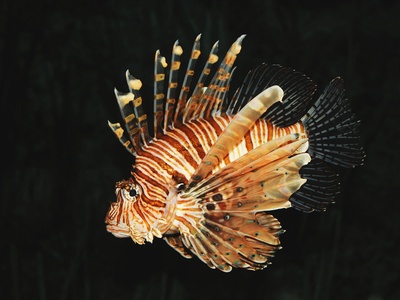
Common lionfish
A notorious invasive predator with dramatic, venomous fins. Originally from the Indo-Pacific, its population has exploded, posing a major threat to native reef fish. Efforts are underway to promote it as a food fish.

Red scorpionfish
A master of camouflage, this large scorpionfish blends perfectly with the rocky seabed. It is an ambush predator with venomous spines, requiring careful handling. Despite this, it is highly valued for its use in stews.

Dusky spinefoot
A successful Red Sea invader, this herbivorous fish forms large schools that graze heavily on algae. It is now a very common sight and an established part of the local commercial catch, known for its venomous fin spines.
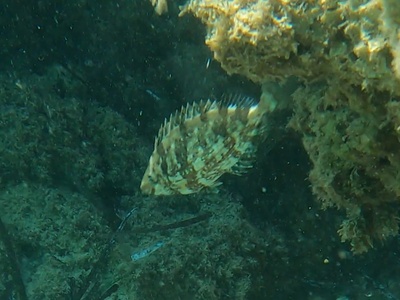
Marbled spinefoot
One of the first and most successful Lessepsian migrants. This rabbitfish grazes on algae and can form large schools. It is a significant commercial species, having largely replaced native herbivores in some areas.
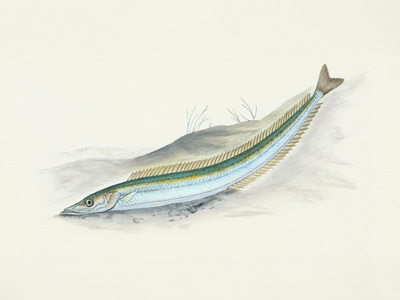
Yellowmouth barracuda
A formidable predator known for its sleek body and powerful jaws. It often forms large, intimidating schools. While attacks are rare, its appearance is impressive. It’s a popular catch for both sport and commercial fishing.
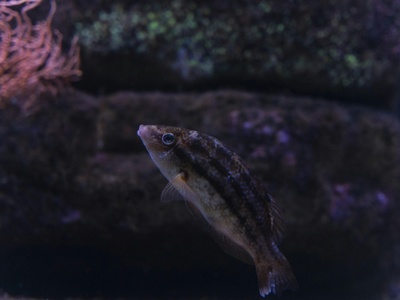
Silver-cheeked toadfish
A dangerous invader from the Indo-Pacific. This pufferfish contains a potent neurotoxin (tetrodotoxin) making it lethal if eaten. It is a major nuisance, damaging fishing nets and preying on local species.

Bluespotted cornetfish
An unmistakable, extremely long and slender fish that invaded from the Red Sea. This ambush predator often hovers vertically among seagrass. It’s now a very common sight for divers all along the Lebanese coast.
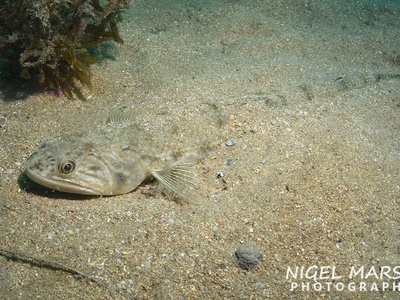
Brushtooth lizardfish
A voracious ambush predator that buries itself in the sand to wait for prey. This Lessepsian migrant has become extremely abundant and is now a common component of the bycatch in trawl fisheries.

Randall’s threadfin bream
A recent Red Sea invader that has rapidly established large populations in deep waters. This small pinkish fish has become a new and important target for the Lebanese trawl fishery, filling a new economic niche.
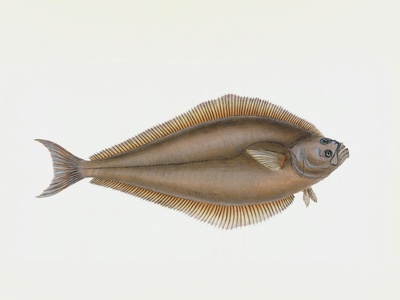
Reticulated filefish
A small, distinctively shaped Lessepsian migrant with a rough, sandpaper-like skin and a prominent spine on its head. It is a common sight in harbors and shallow vegetated areas, feeding on small invertebrates.
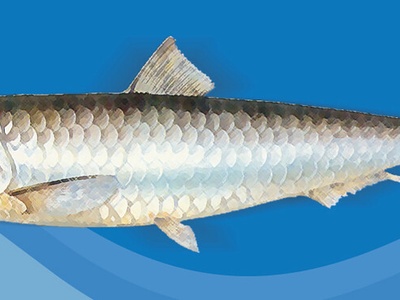
European pilchard
A small, silvery schooling fish that forms the backbone of one of Lebanon’s most important fisheries. Sardines are a crucial part of the food web and a staple food, often grilled or preserved.

European anchovy
Another vital small pelagic fish for local fisheries. Anchovies form immense schools and are essential prey for larger predators. They are commercially harvested for direct consumption and processing.

Atlantic bluefin tuna
An iconic, powerful, and fast-swimming predator that migrates through Lebanese waters. It is one of the most valuable fish in the world. Its fishery is highly regulated due to past overexploitation.

Common dolphinfish
Known locally as ‘delfin’, this fast-growing pelagic fish is famous for its vibrant green, blue, and yellow colors that fade upon death. It’s a prized catch for sport fishermen and a seasonal delicacy.

Bluefish
A very aggressive predatory fish known for feeding in frenzied schools. It has a streamlined body and razor-sharp teeth. It is a popular target for anglers and a commercially important species, but its population is declining.
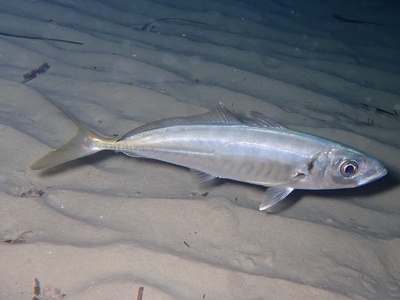
Mediterranean horse mackerel
A very common and commercially important schooling fish. It is a staple in the local diet, often fried or baked. Its distinctive feature is the line of scutes (bony plates) along its side.

Garfish
A long, slender fish with a distinctive beak-like jaw filled with sharp teeth. It swims near the surface and is known for its green bones. It is caught seasonally and is popular pan-fried.

John Dory
An unusual-looking fish with a compressed body and a large dark spot on its side, said to be St. Peter’s thumbprint. It is a solitary ambush predator and a highly prized gourmet food fish.

European hake
A key deep-water predator and one of the most important commercial fish in the Mediterranean. It is primarily caught by bottom trawlers off the Lebanese coast and is a popular food fish.

Forkbeard
A nocturnal, cod-like fish that hides in caves and crevices during the day. It has a single barbel on its chin. It is a common catch for artisanal fishermen and is well-regarded for its meat.
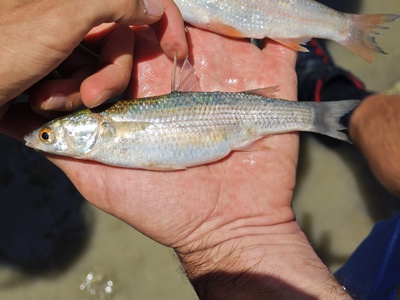
Thinlip mullet
A common mullet species often found in schools in harbors and river mouths. It feeds on detritus and small algae from the sediment. It is a resilient and commercially important fish in coastal fisheries.
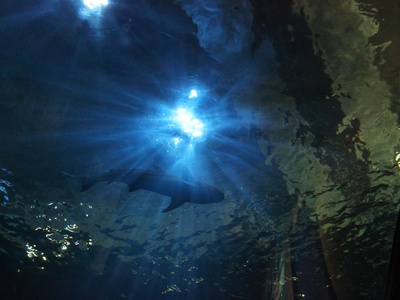
Sandbar shark
One of the most common large sharks in the Mediterranean, though its population is endangered globally. It is characterized by its large first dorsal fin. It is a protected species facing severe threats from overfishing.
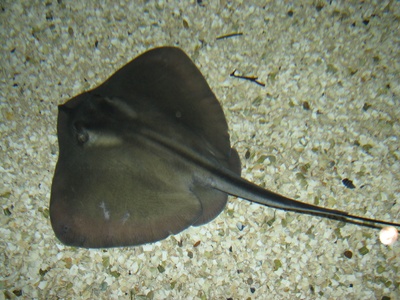
Common stingray
A diamond-shaped ray that is often found partially buried in sand. It possesses a venomous serrated spine on its tail used for defense. It is a vulnerable species often caught accidentally in trawl nets.
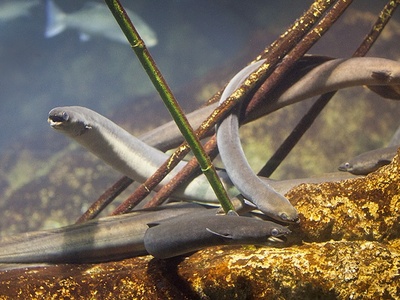
European eel
A critically endangered species with a fascinating life cycle, migrating from rivers like the Litani to the Sargasso Sea to breed. Overfishing, pollution, and dams have devastated its populations across its range.

Orontes trout
A critically endangered trout species found only in a few streams of the Orontes River basin in Lebanon. It is threatened by water abstraction, pollution, and the introduction of non-native trout. A true Lebanese endemic.
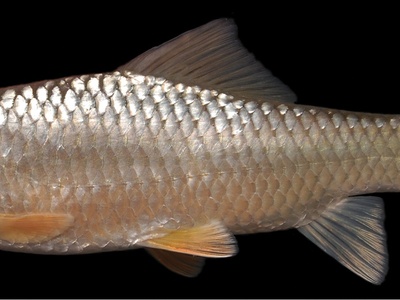
Orontes himri
A native freshwater fish from the carp family found in the Orontes River. It is an important part of the river’s ecosystem but is threatened by habitat degradation and pollution, making it a vulnerable species.

Levantine scraper
A common freshwater fish adapted to fast-flowing rivers. It uses its specialized mouth to scrape algae off rocks. It is a hardy species but is still affected by water quality and river modifications.

Large-scaled pupfish
A small, resilient native fish where males display stunning blue coloration during breeding. They inhabit small, often threatened, water bodies and are vulnerable to habitat loss and competition from invasive mosquitofish.
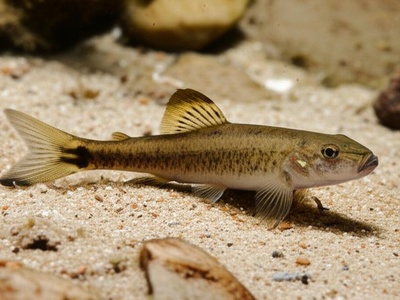
Jordan stone loach
A small bottom-dwelling fish found in rivers like the Jordan and Litani. It uses a sucker-like mouth to cling to rocks in currents and feed on algae. It’s an important indicator of river health.
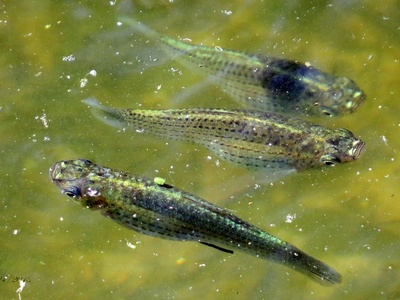
Eastern mosquitofish
A small, highly invasive live-bearing fish introduced globally for mosquito control. In Lebanon, it outcompetes and preys on native species like the pupfish, posing a serious threat to freshwater biodiversity.
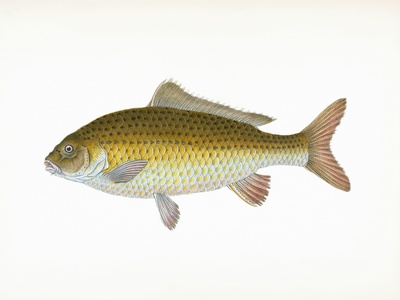
Common carp
A large, hardy fish introduced worldwide for aquaculture and angling. It is now established in water bodies like Lake Qaraoun. It can alter habitats by uprooting vegetation and clouding the water.

Rainbow trout
A popular cold-water fish introduced to Lebanon for aquaculture and stocking in some mountain streams. It requires high-quality, oxygenated water and cannot survive in warmer, polluted lowland rivers.



